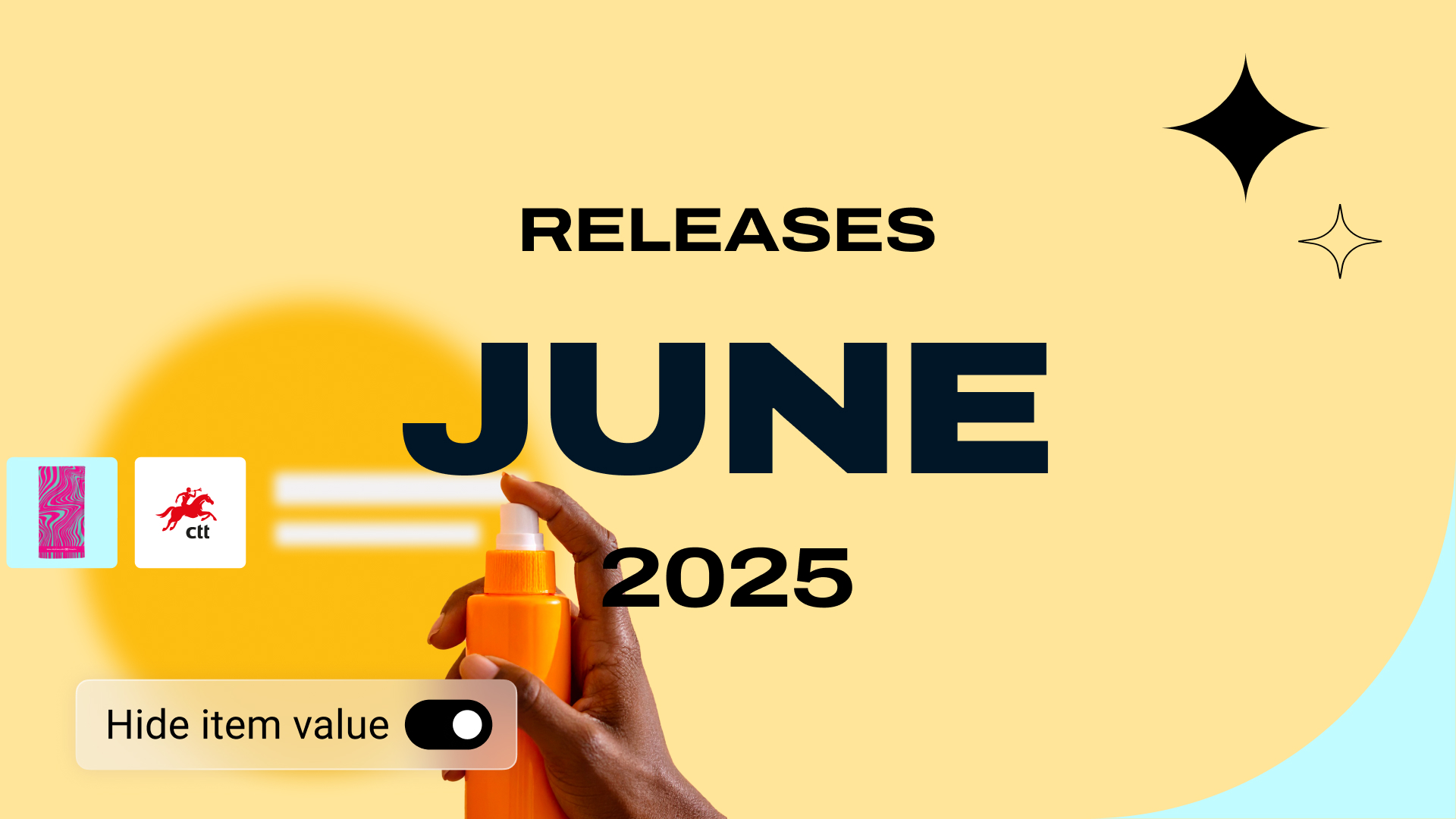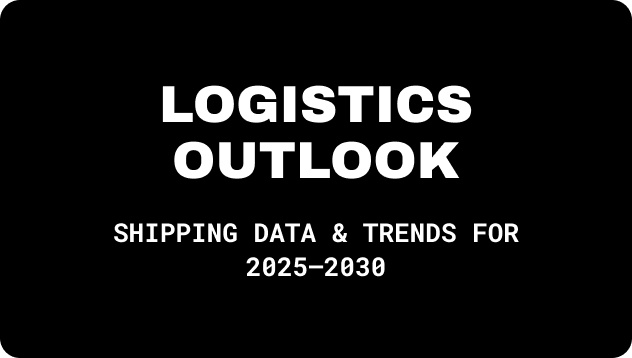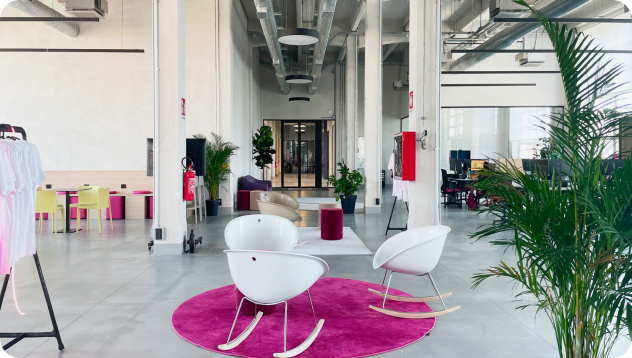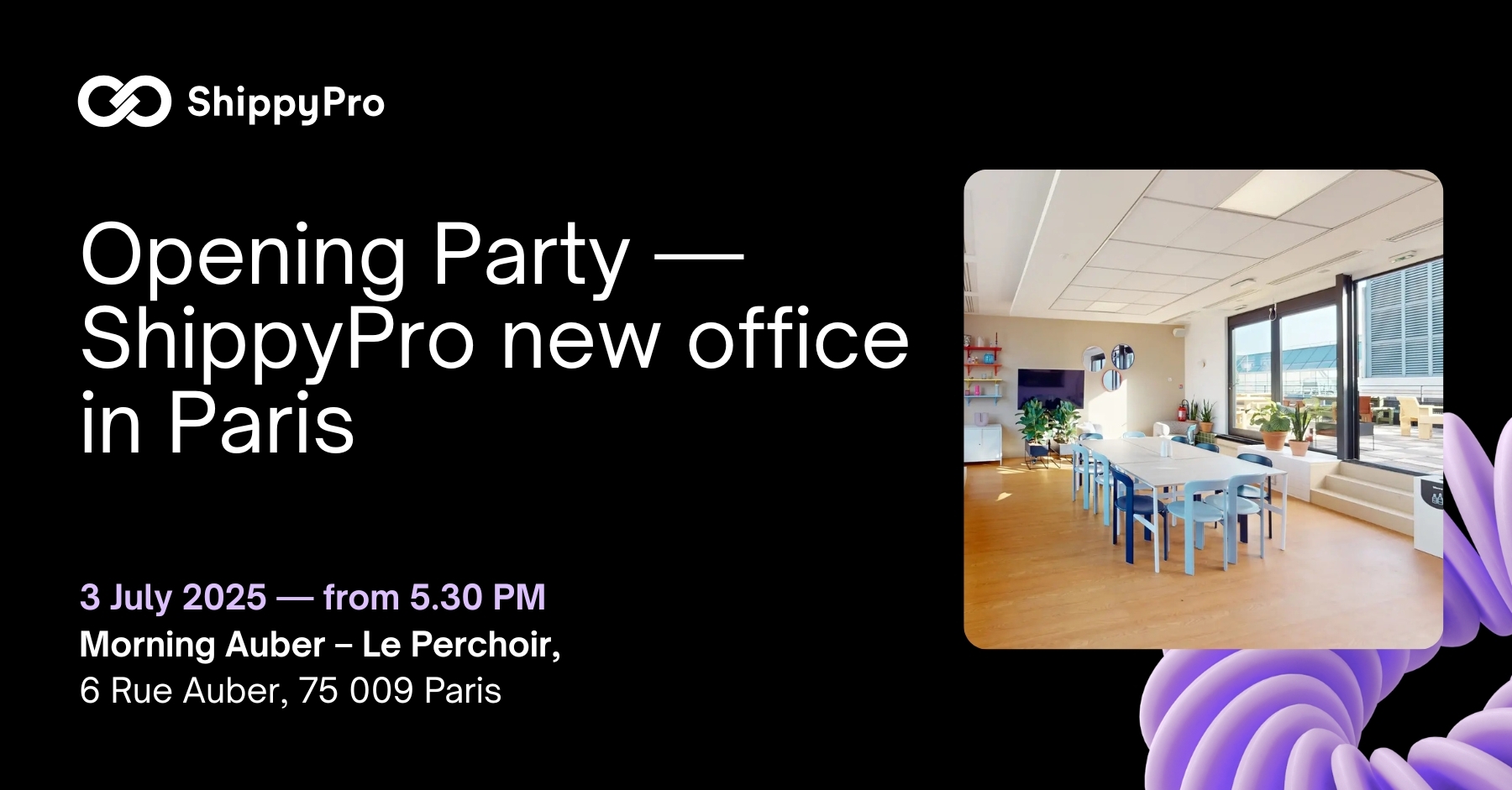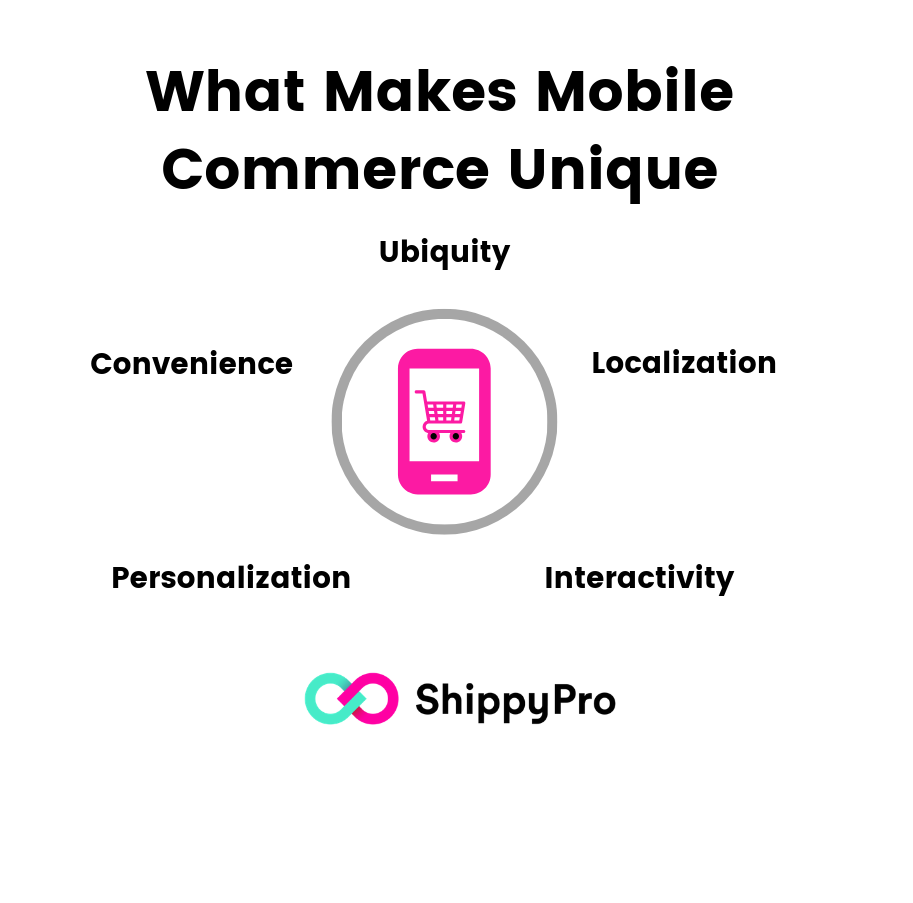The Importance of Mobile Commerce in the customer purchase journey
Mobile Commerce is no longer an option, you know it.
To understand how mobile commerce is affecting businesses across the board, we can look at some data:
- In 2017, for the first time, mobile phone traffic has surpassed desktop traffic.
- 65% of e-commerce purchases come from desktop, 35% from mobile.
Even if we have an increase in mobile traffic, the conversion rate for mobile users is still lower than the one of desktop users.
This is due to a phenomenon which is called Webrooming whereby consumers are only using their phone to conduct research and compare prices, without actually following through with the transaction.
Table of Contents
How purchase behaviour is affected by mobile
The model we’re going to use was developed by Philip Kotler and describes the stages consumers go through when they approach a purchase decision.
Before, the mobile revolution, all these four stages were conducted offline. Now depending on the types of products and services we need to acquire the customer journey can happen online or offline.
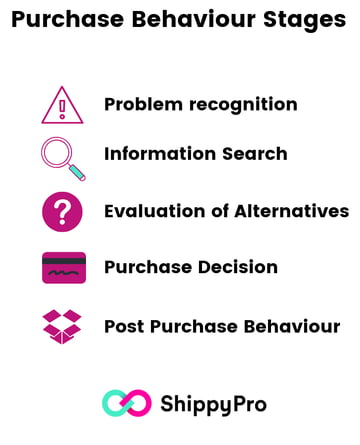
Let’s see to what extent the buyer behaviour model can be applied in the context of mobile commerce:
- Problem Recognition.
Problem recognition deals with the “inception” of the purchase decision, occurring when we find a problem that needs to be solved. Companies will try and position their brand our minds so that we’ll be better able to recall their brand when a particular problem shows up. On the web, this stage of buying behaviour is addressed through a variety of inbound marketing strategies. - Information Search.
The next stage in buying behaviour entails for information search: the more serious the problem, the more time we’ll spend collecting information. As the volume of information on the internet is too much for us to process, we rely on search engines to do refine what we are looking for and allow us to understand what we need. In this context SEO and SEM, marketing plays an important role in reaching potential customers first. - Evaluation of Alternatives.
This stage relates to the evaluation of the output of our research, in order to find the most viable solution to our problem. On the web, whenever we reach the conclusion of our research stage, we can simply start the process to test the quality of our results. When speaking about evaluating alternatives we take into account a cost-benefit relationship. There are usually 4 ways in which this comparison can play out: more for less, more for more, more for the same, less for much less. - Purchase Decision.
This is the central stage of the buying process: deciding to go ahead with a purchase.
As most purchase decisions are grounded on an emotional drive there are a few factors that can influence our purchase decision. One of the elements working against our conversion rates has to do with the fact that on the web shops are always open. This is why companies go through intensive promotional in order to ignite customer’s desire. - Post Purchase Behaviour.
This accounts for customer support, and post-purchase customer management, which involve dealing with customer satisfaction or managing returns. This might seem like a detail, but most practitioners tend to agree that customer service is becoming the new way to successful customer acquisition and retention.
What other elements apply specifically by mobile devices? Let’s see what unique set of features mobile commerce brings to the picture.
Mobile commerce disrupts distribution and consumer behaviour
Consumer behaviour is fundamental to design any business strategy. If you don’t understand your customer, you don’t understand his needs and pains, and you’re unlikely to find a problem to solve for him.
It may be much easier to deal with a customer he shows up at your physical store. In this context, through thoughtful customer service, it’s possible to create a connection to a one time shopper and turn himher into a regular.
How can this be done online? In the rest of this post, we’re going to discuss how interface design can really help narrow down the distance between an online and in-store experience.
Some may argue that a physical store experience may never be replaced, but research suggests that in reality, mobile sales will account for at least 20% of all sale by 2020.
If we focus on the unique elements of mobile commerce we realise that technology has some extraordinary advantages based mobile sourcing of user data. This proves to be a very effective weapon to create user experiences and interface designs which convert traffic into sales.
In the following paragraphs, we’ll address how a well-conceived design can make any website a perfectly functioning online shop.
What changes is mobile commerce bringing to the picture?
Technology has levelled the playing field, creating a more equal competitive environment where larger is often a synonym of inefficient and wasteful, and the distribution channels are much more pull-oriented than push-oriented.
This change in business strategy was made possible by a series of unique features in mobile commerce development:
- Ubiquity. This refers to distribution, companies who have spent huge amounts of resources in developing distribution channels and POS (Points of Sale) networks, are now suffering from a variety of challenges. First and foremost, the ZMOT (Zero Moment of Truth) perspective, suggests that consumers are heavily influenced in their perception of a brand even before they enter a retail location. In this sense, the perception of a company’s digital presence is as influential – if not more influential – than its physical presence. Companies who have invested in creating locations in the world’s most prestigious real estate, are now changing their approach and pursuing inbound digital marketing strategies that can interact on a digital level with their consumers.
- Convenience. The traditional supply chain management approach creates a base cost for consumers that accounts for all of the company’s value chain stages: research and development, production, distribution and sales. By allowing companies to directly reaching customers, mobile commerce has given firms the opportunity to create a ‘disintermediation’ whereby clients are able to access warehouses and wholesalers with a single tap on their screen. Nonetheless, it’s important to remember that even if we can get rid of the intermediator, we cannot get rid of the intermediator’s functions. This is why many websites now serve the exact purpose of creating a re-intermediation location: essentially guiding consumers through companies, that online, look very similar and can be hardly distinguished. As we can see on websites such as opodo.com, at times it’s the companies themselves (of the air travel industry in this case) that realise their need to guide customers through a thick maze of offers and prices.
- Interactivity. E-commerce platforms are able to create dynamic experiences which allow the customer to decide the degree of information they need to acquire from a product before purchasing it. To some extent in the digital world, the product page can be compared to a company’s brand ambassador. A product page is structured to provide all of the necessary information to an interested customer and at the same time provide online support for any unforeseen query.
- Personalisation. As mobile phones allow for data collection, companies are able to adjust each customer’s mobile experience based on collected data such as shopping preferences, previous seen articles and products, purchase history. This also allows creating a shorter ‘checkout’ process as companies are able to store credit card numbers, addresses for shipping and other user preferences.
- Localisation. In case some of the information was not accessible from a specific consumer, we can still draw information for purchase preferences in many other ways. Mobile data sourcing allows considering localised information such as weather, site-specific consumer behaviour and other community-sourced data. This allows companies to advise us on the grounds of geographical information on where are the closest points of contact can be found.
All of these different elements, therefore, allow for marketing strategies which adopt the personas marketing framework. This approach provides with a large amount of information and creates shopping experiences that perfectly meet our customer’s needs.
After having analysed the way in which companies are adapting to mobile commerce to reassess the trajectories followed by consumers throughout their established purchase process, we will now focus on e-commerce to see how this is brought to action on the digital premises, of the company, looking at UX design.
We need to consider mobile commerce, or m-commerce in the same way we assess a customer coming into a store, with the striking difference that if in the real world we would use physical stores, now reality converts into screen real estate, which in mobile devices is actually very small.
In order to continue our discussion, we have to put on a different “hat”, one which allows us to assess ways in which a digital experience can be delivered by looking at the best practices for e-commerce design.
8 Tips to increase the success of your eCommerce design
Here are some facts that allow us to understand how to create a seamless e-commerce experience based on consumer behaviour and UX (user experience) design:
- Your conversion rate and ability to sell is inversely proportional to your consumer’s ability to think. Increase the user’s ability to consume material by reducing the user’s ability to think, via the use of defaults.
This is because, the purchase cycle of our customers is usually not daily, or weekly but monthly. A longer purchase cycle makes our customers unfamiliar with an e-commerce platform, as this is not something they are exposed to on a daily basis. By using default settings, you can assist your customers in scrolling through your website using community-sourced data to determine the most statistically relevant choices. This can be applied for everything, from product display to payment methods, to best buys, to cross-selling and more. We need to consider clutter or unnecessary information as friction. In other words, the more they scroll, the less they click. - Reduce Anxiety for Communication. In order not to create a sense of anxiety in your consumer you need to make sure that the content is able to provide a clear structure so that customers can become instantly able to recognise the value delivered by the website. It’s essential that we can clarify instantly our e-commerce product categories or service categories. The responsiveness and adaptability of website design must foster a seamless transition in communicating the most relevant information, within the smallest amount of time.
- Support the navigation experience by providing constant benefits. This is also important and is applied in a wide scenario of situations whereby you need to make sure our clients are able to act on the grounds of content that ignites action. Customers will always follow the costbenefit – riskreward logic through every single click onto the website. Designers need to sufficiently reinforce the motives pushing clients to click in order to acquire benefits.
- Action indicator. Every time a consumer does something, the website needs to acknowledge it, through animation. This reaction allows for feedback and acknowledgement of the interaction and helps consumers understand what type of information or process is being managed by the website or app. An example of this is indicated by notifications like: 1 item has been added to your shopping bag’.
- Descriptive indicators and buttons. We need to use clear text to communicate to the customer what happens if they click, this again helps us clarify what benefits and outcomes can be expected from an interaction.
An example are buttons indicating information such as:
‘Continue to Checkout’
‘Continue to Secure Payment’.
As opposed to next, or continue. These last formats do not provide any information on what will happen as a consequence of us clicking a button.
Moreover, it’s necessary to clarify how many stages the purchase process entails so that every single click informs customers of what they are doing and what will happen next.
- On mobile, you need to reinforce security. Providing constant reassurance of security standards when processing online payments is a necessity. Most users don’t think that mobile transactions are as secure as desktop transactions. We need to balance this irrationality with clear references to mobile security. Apparently, the lock icon size makes an impact: the bigger the icon the more secure a customer feels.
- Data entry, like sign-in forms, need to be extremely focused. You need to be crystal clear regarding what information needs to be entered and what to click after field completion. If customers are provided with unclear layouts you are making it very difficult for them to actually complete the form and sign inregister.
- Transparency is essential. if you list shipping costs too late in the shopping check-out, customers may be more prone to leave the purchase process. At the same time, if you list a high shipping price from the beginning, customers may consider the final price too high and not follow through anyway. So you want to make sure that customers are aware of shipping costs and times of shipment.
Other issues have to do with the fact that typing is really hard on the phone. There are a few overlaps between e-commerce and native apps, and this is because to some extent mobile responsive websites need to look more and more like apps.
We hope you enjoyed the article, and we recommend looking through our suggested reading list for more details on this interesting topic.
About the Author

Thomas Brownlees, is the Founder and CEO of 440 Industries, a consulting firm helping SMEs tackle the challenges of globalisation.
ShippyPro is the complete shipping software for online and offline retail. With Label Creator, Track & Trace, Easy Return and Analytics features, our software simplifies your shipping operations. ShippyPro integrates with over 180 carriers and 80 sales channels, making it compatible with a wide range of products and use cases.
